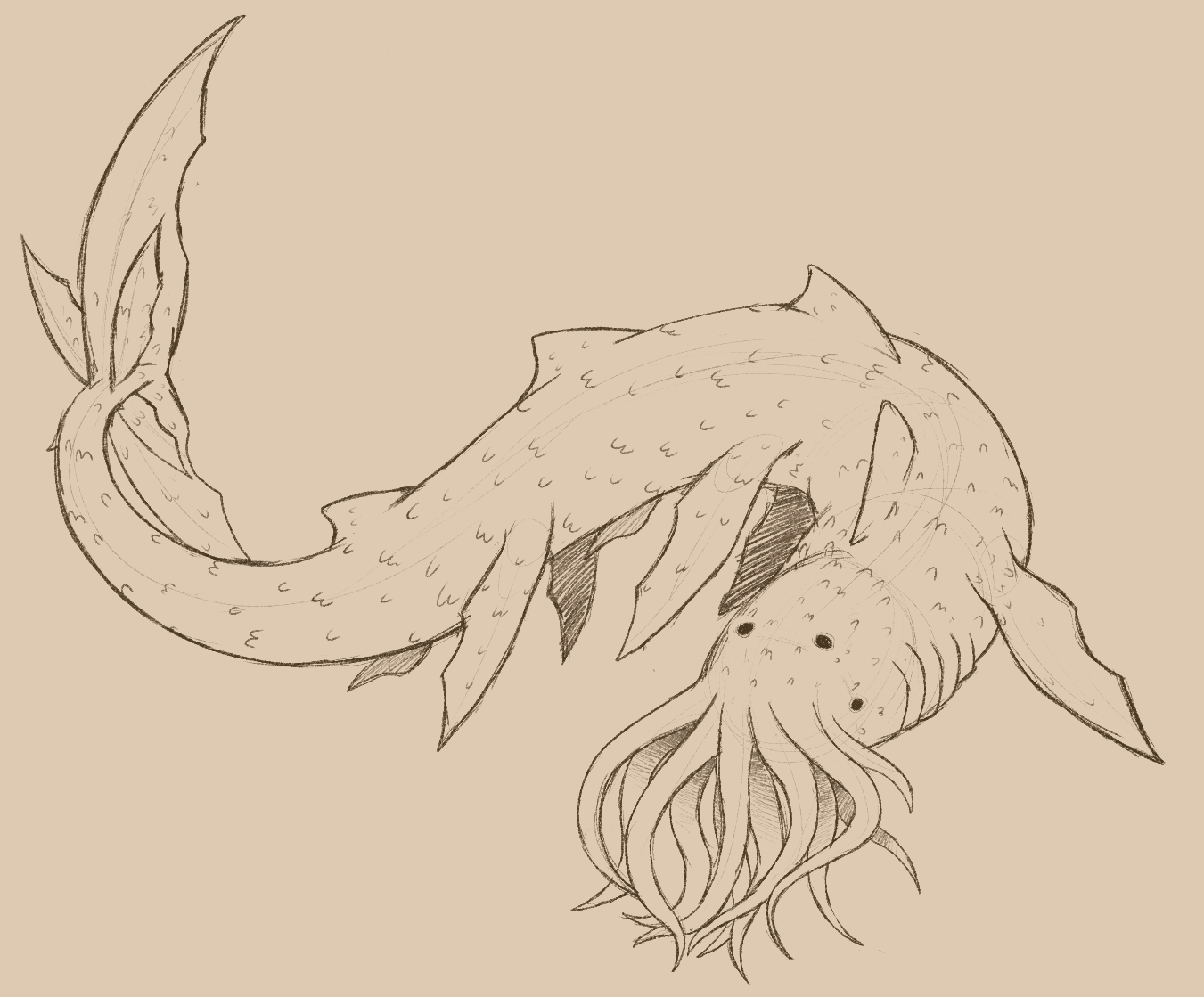Saeva
Oh no...This creature lives in the deepest depths of the sea. Occasionally, however, it also roams higher areas of the seas, where it has sometimes happened that ships fell victim to this monster. Not many have survived and so the description of this being is rather vague. It says it has a huge, scaly body and its fins should be so strong that it would be easy for them to smash even stone. But the most striking and frightening feature of this giant is its mouth, which is covered with tentacles all around, which in some places lightly shine.
-Dreyri Fuchswald
Basic Information
Anatomy
The body of this Leviathan is covered with many, closely lined up scales. Despite its size, its fins allow it to glide imperceptibly through the water and yet are so strong that they can smash rocks without being damaged.
On the head, just before the gills, there are four rudimentary eyes. These only see unclear contours and differences in brightness.
Around the mouth there are tentacles, which are used for hunting in the deep sea as well as in higher areas.
The deep sea hunt looks rather relaxing for the Saeva, however, the bioluminescent tentacles attract the prey, which is immediately caught and led to the mouth
Genetics and Reproduction
The Saeva mate every two years in the last month of the Hie.
For this purpose, all Saeva migrate to the northern regions of Orcerta to the Illdike trench.
During mating, males and females knot their tentacles together.
This fertilizes the female's egg which is excreted from the mouth a short time later.
The egg sinks to the bottom of the trench and releases a young Saeva after about a year.
Growth Rate & Stages
It takes a Saeva a year to hatch from the egg, after that it feeds mainly on zooplankton until it has grown stronger scales.
After about another year, a young Saeva goes hunting on its own.
After ten more years, it's full-grown.
Ecology and Habitats
The natural habitat of the Saeva is far off the coast.
They are found mainly in the depths of the sea, but can occasionally be spotted hunting near the sea surface.
It's good to turn away as fast as possible when you see these creatures, since many ships have already fallen victim to them.
Dietary Needs and Habits
Saeva feed on all living creatures of the sea, because of their size they have no natural enemies either.
They hunt in two different ways:
Deep sea:
In the deep sea, Saeva drift and wait until they have attracted victims through their bioluminescent tentacles. As soon as a prey touches a tentacle, it is caught and transported to the mouth.
Higher zones:
in the higher areas of the ocean, the Saeva orients itself to the shadows it perceives, so it usually immediately attacks the largest shadow in its field of vision.
Biological Cycle
In the Aesta, they are more active in the upper areas of the sea, since organisms now dare to venture deeper due to the higher temperatures.
Additional Information
Perception and Sensory Capabilities
The eyes of the Saeva are rudimentary and see only indistinct shadows and differences in brightness.
With its tentacles, the Saeva senses most of its environment, be it pressure differences in the water or prey that even briefly touch a tentacle.
Dedicated to Sai
Lifespan
80-110 Years
Average Weight
200.000 Kg
Average Length
30-40 m
Body Tint, Colouring and Marking
Dark muddy blue and green


Comments